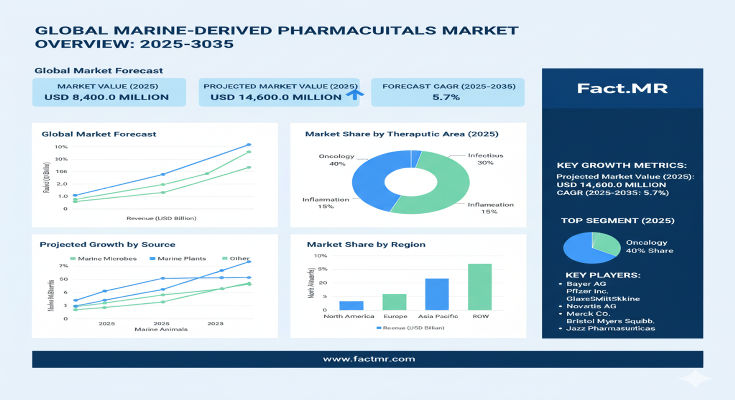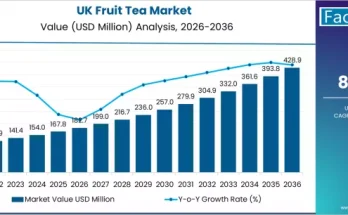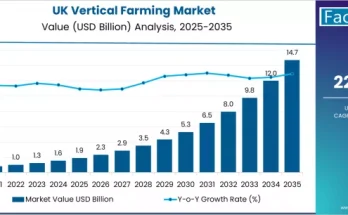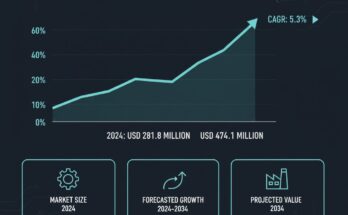According to projections, the global Marine-derived Pharmaceuticals Market is expected to grow by USD 6,200.0 million over the course of the forecast period, reaching USD 14,600.0 million by 2035. At a compound annual growth rate (CAGR) of 5.7%, the market is expected to grow from its 2025 valuation of USD 8,400.0 million.
The global marine-derived pharmaceuticals market is gaining remarkable traction as biopharmaceutical companies and research organizations explore the untapped potential of ocean biodiversity for next-generation drug development. According to detailed research by Fact.MR analysts, the market is expected to grow significantly over the next decade, driven by rising investments in marine biotechnology and the discovery of novel bioactive compounds from marine organisms. The market is forecasted to witness robust expansion, supported by increasing R&D funding and growing applications in oncology, cardiovascular treatment, and neuropharmacology.
Click Here for Sample Report Before Buying: https://www.factmr.com/connectus/sample?flag=S&rep_id=8711
Expanding Potential of Marine Biotechnology
The ocean represents one of the largest and least-explored ecosystems on Earth, housing countless species with unique biochemical properties. Marine sponges, mollusks, seaweeds, bacteria, and fungi produce diverse secondary metabolites that exhibit strong therapeutic activities, making them promising sources for drug discovery. These marine-derived compounds are proving effective against several life-threatening diseases, including cancer, bacterial infections, and inflammatory disorders.
The growing trend of adopting biologically active marine compounds is expected to transform pharmaceutical research in the coming years. With the increasing prevalence of drug-resistant infections and chronic diseases, pharmaceutical manufacturers are turning toward marine bioprospecting as a sustainable and effective approach to discover new classes of bioactive molecules.
Market Drivers Fueling Growth
One of the key factors propelling the marine-derived pharmaceuticals market is the rising demand for natural and sustainable drug sources. Unlike synthetic drugs, marine-derived compounds often have unique structural diversity, making them suitable for novel drug development. The continuous depletion of terrestrial resources has further pushed pharmaceutical companies to explore the ocean as an alternative biopharmaceutical reservoir.
Advancements in marine biotechnology, such as genetic sequencing, high-throughput screening, and marine genomics, are improving the identification and isolation of potential compounds. Additionally, breakthroughs in fermentation and bioengineering technologies have made it easier to produce marine-derived compounds at scale without overexploiting ocean ecosystems.
Growing collaborations between pharmaceutical companies and marine research institutions are also accelerating the drug development pipeline. Governments in regions such as North America, Europe, and Asia-Pacific are actively supporting marine bioprospecting through research grants and sustainable exploration initiatives.
Application Insights
The marine-derived pharmaceuticals market is dominated by oncology applications, accounting for a major share of the total market revenue. Compounds such as cytarabine, derived from marine sponges, have revolutionized cancer therapy. Similarly, compounds like trabectedin, eribulin, and plitidepsin—originating from marine organisms—are being used or tested in cancer treatments across various stages.
Beyond oncology, marine-derived compounds are increasingly being used in cardiovascular, neurological, and infectious disease therapies. Omega-3 fatty acids extracted from marine fish oils continue to remain in high demand due to their proven cardiovascular and anti-inflammatory benefits. Moreover, the exploration of marine peptides and polysaccharides is gaining attention for their potential use in treating neurodegenerative diseases such as Alzheimer’s and Parkinson’s.
Regional Market Overview
North America currently dominates the global marine-derived pharmaceuticals market, supported by a strong ecosystem of biotechnology research, advanced drug development infrastructure, and significant public-private investments in marine biology. The United States leads the region due to its numerous ongoing clinical trials and collaborations between pharmaceutical firms and oceanographic institutes.
Europe stands as the second-largest market, driven by countries such as Norway, France, and the United Kingdom, which are heavily investing in marine biotechnology. The European Union’s funding for sustainable blue economy projects and marine bioresource utilization continues to strengthen the region’s position in this industry.
Asia-Pacific, however, is anticipated to be the fastest-growing region during the forecast period. Expanding marine research capabilities in Japan, China, South Korea, and India, along with government-backed biotechnological initiatives, are contributing to significant advancements in marine-based pharmaceutical discoveries.
Competitive Landscape and Innovation
The marine-derived pharmaceuticals market features a mix of global pharmaceutical giants, marine biotech startups, and research institutes. Companies are increasingly focusing on strategic partnerships and joint ventures to enhance their R&D pipelines and optimize compound extraction technologies.
Recent innovations in AI-driven compound screening and molecular modeling are transforming the discovery process, helping researchers identify and synthesize marine molecules more efficiently. Leading players are also focusing on sustainable sourcing practices to comply with environmental regulations and ensure ethical harvesting of marine organisms.
With continuous technological improvements and growing demand for eco-friendly bioactive compounds, the competitive landscape is expected to become more dynamic over the next decade.
Challenges and Future Opportunities
Despite its immense potential, the marine-derived pharmaceuticals market faces certain challenges such as high R&D costs, complex regulatory frameworks, and environmental concerns related to marine biodiversity conservation. However, advances in synthetic biology, recombinant DNA technology, and cell culture fermentation are reducing dependence on natural harvesting, making large-scale production economically feasible.
Furthermore, the growing emphasis on personalized medicine and rare disease treatment is expected to create new opportunities for marine-derived compounds, as they offer distinctive pharmacological activities suited for targeted therapy. As sustainability remains a global focus, marine biotechnology is likely to play a central role in shaping the future of drug discovery.
Browse Full Report: https://www.factmr.com/report/marine-derived-pharmaceuticals-market
Future Outlook and Report Benefits
The future of the marine-derived pharmaceuticals market looks promising, with continued growth expected across therapeutic areas and geographic regions. Between 2025 and 2035, the market is projected to expand significantly, supported by increasing investments in marine research, government-backed sustainability programs, and the commercialization of novel marine-based drugs.
The comprehensive research report on the marine-derived pharmaceuticals market provides an in-depth understanding of market dynamics, emerging trends, competitive strategies, and regulatory insights. It offers valuable intelligence on key players, investment opportunities, and R&D directions to help businesses and investors make informed decisions.
Purchasing the full report ensures access to accurate forecasts, strategic market insights, and expert analyses that highlight how ocean-based compounds are revolutionizing modern medicine. As the convergence of biotechnology and marine science continues, stakeholders positioned early in this sector stand to benefit from substantial long-term growth.



